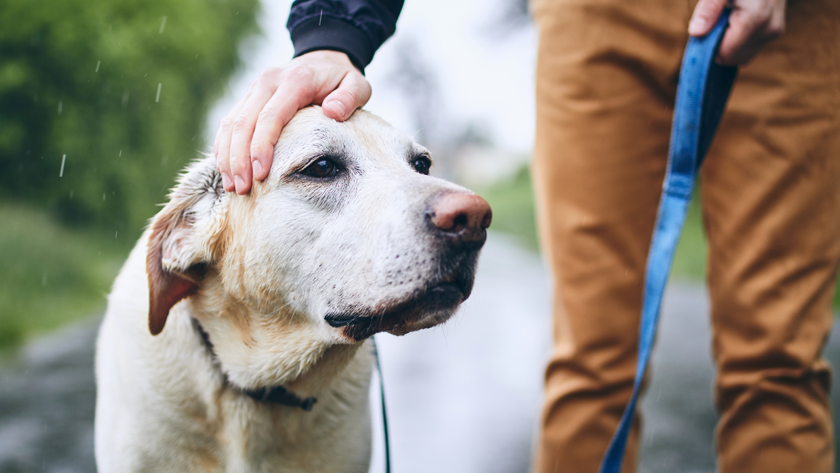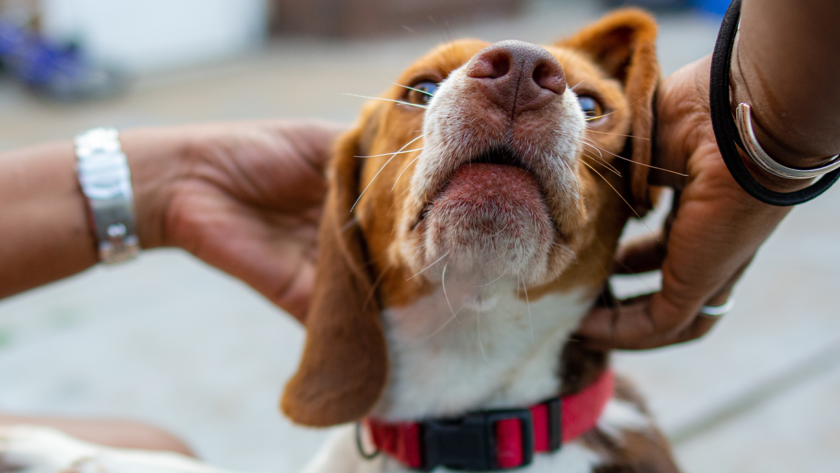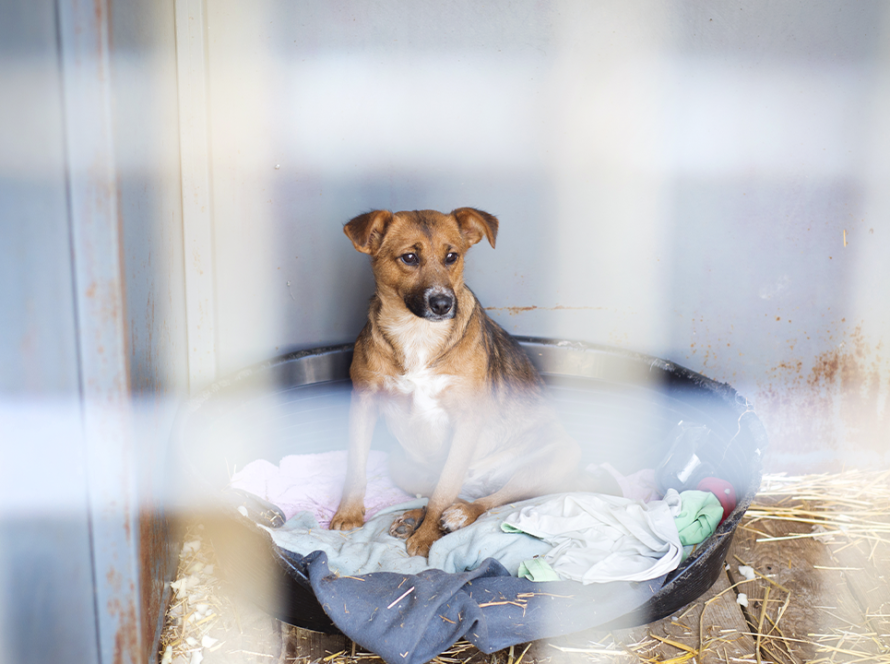As a new dog owner, you may be worried about why your dog whining in crate at night. You may have introduced a crate to provide your furry friend with a safe, cosy space of their own. Crate training comes with numerous benefits, including house training, preventing destructive behavior, and offering a den-like retreat. However, you might face a common challenge: your dog whining in the crate at night. This nighttime disturbance can be frustrating for you and your neighbors, but don’t lose hope! Understanding the reasons behind the whining and implementing the right strategies can help you and your pup get a peaceful night’s sleep.
One possible reason for dog whining in crate at night is that your dog may not have fully adjusted to their crate or they feel anxious and isolated. Dogs are pack animals by nature and can experience separation anxiety when away from their human family, especially during the quiet hours of the night. Ensuring your dog feels comfortable and secure in their crate is essential.
This can be achieved by gradually increasing the time they spend in the crate, including during the day, and by placing the crate in a room where they can still sense your presence. Comfort items like a soft bed, a piece of your clothing, and a quiet toy can also make the crate feel more inviting and soothing for your pet.

You can also check our second blog about Dog Whining in Crate Click Here For Blog
Why dog whining in crate at night?
dog whining in crate at night for several reasons, including:
- Needing to go outside
- Hunger or thirst
- Lack of exercise
- Seeking attention
- Discomfort or illness
Needing to Go Outside
One common reason dog whining in crate at night is the need to relieve themselves. Puppies, in particular, have small bladders and may need to go outside multiple times during the night. Adult dogs, too, may whine to alert you that they need a bathroom break. Establishing a consistent late-night potty routine can help alleviate this issue.
Hunger or Thirst
A dog whining in crate at night due to hunger or thirst, especially if they have missed a meal or haven’t had enough water during the day. Ensure your dog has a suitable feeding schedule and access to fresh water before bedtime to prevent dog whining in crate at night caused by hunger or thirst.
Lack of Exercise
Insufficient exercise can lead to a dog feeling restless at night, resulting in dog whining in crate at night. Dogs require regular physical and mental stimulation to burn off energy. A good play session or a walk before bedtime can help tire your dog out and promote a more restful night in the crate.
Seeking Attention
Some dog whining in crate at night simply because they’re seeking attention or companionship. This can stem from separation anxiety or the desire for social interaction. To mitigate this, spend quality time with your dog before crate time and gradually acclimate them to spending time alone.
Discomfort or Illness
Finally, a dog may whine if they’re feeling uncomfortable or ill. This could be due to a too-hot or too-cold environment, or it could indicate a health issue requiring veterinary attention. Always ensure your dog’s crate is in a comfortable setting and be attentive to any signs of illness that may necessitate a trip to the vet.
Should you ignore a dog whining in crate at night?
Ignoring a dog whining in crate at night can be a difficult decision to make and may not always be the best approach. While it’s important to teach your dog to be comfortable and settle in their crate without constant attention, immediately responding to dog whining in crate at night can inadvertently reinforce the behavior. Dogs may learn that whining is an effective way to gain attention or get out of the crate. However, differentiating between whining for attention and whining due to genuine needs is crucial. If your dog whining in crate at night because of discomfort, illness, or a need to go outside, they require your immediate attention to prevent health issues or accidents in the crate.
To manage dog whining in crate at night effectively, establishing a routine and setting boundaries is key. Before considering the option of ignoring your dog whining in crate at night, ensure all their basic needs are met—this includes having had enough exercise during the day, going to the bathroom before bedtime, and having a comfortable sleeping environment. Gradual crate training exercises can also help your dog associate their crate with positive experiences, reducing anxiety and stress. If dog whining in crate at night persists despite meeting all their needs, consulting with a veterinarian or a professional dog trainer may be necessary to identify and address any underlying issues or to refine your crate training technique.
You can also check our second blog about Dog Whining in Crate Click Here For Blog
When Is It Time To Worry?
- Excessive Whining Without Apparent Reason
- Changes in Behavior or Appetite
- Whining Accompanied by Other Signs of Distress
Excessive dog whining in crate at night Without Apparent Reason
If your dog whining in crate at night excessively despite addressing all the common causes, it might be time to dig deeper. Persistent dog whining in crate at night without an apparent reason could indicate underlying issues such as separation anxiety at a more severe level or even undiagnosed health problems. It’s crucial to observe your dog for any other unusual behaviors or symptoms and consider consulting with a veterinarian or a professional dog trainer to identify and address the root cause effectively.
Changes in Behavior or Appetite
A sudden change in your dog’s behavior or appetite, accompanied by nighttime whining, warrants closer attention. Changes might include a lack of interest in activities they once enjoyed, aggression, or a significant decrease or increase in appetite. These signals can indicate health or psychological issues that need to be evaluated by a professional. Ensuring your dog’s physical and emotional well-being is essential for their overall quality of life and can help minimize distressing behaviors like dog whining in crate at night.
Whining Accompanied by Other Signs of Distress
When dog whining in crate at night is accompanied by other signs of distress such as pacing, licking, drooling, or attempts to escape the crate, it’s a clear signal that your dog is not just seeking attention but may be experiencing high levels of anxiety or discomfort. This scenario requires immediate action to alleviate your dog’s stress and may involve creating a more gradual acclimation to the crate, adjusting the sleeping environment, or seeking advice from a veterinarian or animal behaviorist to ensure your dog feels safe and relaxed in their crate.

How do I calm my dog in his crate at night?
Calming your dog in their crate at night involves creating a soothing environment and implementing a consistent bedtime routine. Start with exercise and a potty break before bed to ensure they are physically comfortable. Introduce a special crate-only toy to associate the crate with positive experiences. Consider adding a soft blanket or a piece of clothing with your scent for comfort. Playing gentle, calming music or using a white noise machine can also help mask external sounds that might disturb your dog.
Establishing and sticking to a regular bedtime routine helps signal to your dog that it’s time to settle down for the night. If anxiety is a significant issue, consult with a veterinarian about possible solutions, including the use of pheromone diffusers or supplements designed to calm dogs.
Best Dog Crate
Tips for Calming Your dog whining in crate at night:
- Establish a Routine: Create a consistent nightly routine that includes exercise, playtime, and a potty break before settling into the crate.
- Comfort Items: Place familiar and comforting items in the crate, such as a favorite toy or a blanket that smells like home.
- Ignore the dog whining in crate at night Initially: If you’re sure all needs are met, ignore the dog whining in crate at night for a short period to teach self-soothing.
- Positive Reinforcement: Reward calm behavior with treats and praise to reinforce quiet time in the crate.
- Gradual Acclimation: Slowly increase the time spent in the crate while awake to help your dog build a positive association with it.
Establish a Routine
Developing a predictable routine helps your dog understand what to expect at bedtime and prepares them for a calm night in the crate. This routine could include a series of calming activities like a gentle walk, a play session with a focus on winding down, and a final bathroom break. The predictability of these activities can significantly reduce anxiety and help your dog settle down more quickly.
Comfort Items
Introducing comforting items into your dog’s crate can make the space feel safer and more inviting. A blanket with your scent, their favorite toy, or a chew to focus their attention can be particularly soothing. These items provide a sense of security, helping your dog relax and associate the crate with positive experiences.
Ignore the dog whining in crate at night Initially
If you’re confident that your dog’s basic needs are met, and the dog whining in crate at night is for attention, ignoring it initially can be effective. This teaches them that dog whining in crate at night won’t always get your attention, encouraging them to calm down on their own. However, this should be done cautiously and with consideration for the dog’s overall well-being and anxiety levels.
Positive Reinforcement
Using treats and verbal praise to reward quiet behavior helps your dog learn that being calm and quiet in the crate has benefits. Positive reinforcement is a powerful tool in modifying behavior, encouraging your dog to repeat the desired behavior of staying quiet in their crate at night.
Gradual Acclimation
For dogs new to crate training or those with anxiety, gradually increasing the time they spend in the crate while they’re awake can help build a positive association. Start with short intervals and gradually increase the duration, always ensuring the experience is positive. This approach can help reduce anxiety about being in the crate and make night-time crating less stressful.
10 Ways to Stop Your dog whining in crate at night:
- Ensure adequate daily exercise
- Maintain a calm and quiet environment near the crate
- Use anxiety-reducing products
- Provide a comfortable crate setting
- Practice crate training during the day
- Address any underlying health issues
- Offer a late-night snack or chew toy
- Use a crate cover for a sense of security
- Ensure the crate is the right size
- Consult with a professional for persistent issues
You can also check our second blog about Dog Whining in Crate Click Here For Blog
Ensure Adequate Daily Exercise
Ensuring your dog has enough physical activity during the day is critical in managing nighttime whining. Adequate exercise helps burn off excess energy that might otherwise lead to restlessness and anxiety when confined to a crate. Tailor the exercise to your dog’s age, breed, and health condition to ensure they are sufficiently tired by bedtime.
Maintain a Calm and Quiet Environment Near the Crate
Creating a peaceful environment around the crate area can significantly reduce anxiety and promote a sense of safety. Avoid placing the crate in high-traffic areas of the home where noise and disturbances are more likely. Instead, choose a quiet corner that is dedicated to your dog’s rest.
Use Anxiety-Reducing Products
There are various products designed to reduce anxiety in dogs, such as pheromone diffusers, calming collars, or specially formulated treats. These can be particularly useful for dogs who struggle with separation anxiety or general nervousness about being in a crate.
You can check "Interactive Crate Games for Dogs" also.
Provide a Comfortable Crate Setting
Making the crate as comfortable as possible encourages your dog to see it as a safe and inviting space. Use soft bedding, ensure adequate ventilation, and consider the crate’s placement in your home. A comfortable environment makes the crate a place your dog looks forward to spending time in.
Practice Crate Training During the Day
Practicing crate training during the daytime can help your dog become accustomed to the crate without the added stress of being alone at night. Start with short intervals and gradually increase the time your dog spends in the crate. Positive reinforcement for calm behavior in the crate during these sessions is key.
You can check "How to crate train a rescue dog? 20 Best Steps" also.
Address Any Underlying Health Issues
Sometimes, dog whining in crate at night could signal underlying health issues. Dogs with conditions like arthritis may find it challenging to get comfortable and settle down. A thorough check-up with a veterinarian can rule out or address any health problems that might be contributing to nighttime distress.
Offer a Late-Night Snack or Chew Toy
Providing a safe chew toy or a small snack before bedtime can help keep your dog occupied and reduce whining. For some dogs, chewing is a natural way to calm themselves and can be especially helpful in reducing anxiety when confined to a crate.
Use a Crate Cover for a Sense of Security
Many dogs feel more secure in a crate that is covered, as it mimics the den-like environment of their ancestors. Using a light blanket or a specially designed crate cover can create a more enclosed space, helping to alleviate stress and block out stimulating visuals.
You can also check "Need Help Covering a Dog’s Crate? Here Are Best Tips". Click Here
Ensure the Crate is the Right Size
A crate that is too large or too small can be uncomfortable for your dog. Ensure the crate is just the right size, allowing your dog to stand up, turn around, and lie down comfortably without feeling cramped or lost in too much space.
You can also check "4 Tips to choose the Best size of dog crates by breed". Click Here
Consult with a Professional for Persistent Issues
If despite your best efforts, your dog whining in crate at night, it may be time to consult with a professional. A veterinarian, animal behaviorist, or dog trainer can provide personalized advice and strategies to address your dog’s specific issues with dog whining in crate at night.

You can also check our second blog about Dog Whining in Crate Click Here
CONCLUSION:
Successfully stopping your dog whining in crate at night requires patience, understanding, and a consistent approach tailored to your dog’s individual needs. By ensuring your dog gets adequate exercise, creating a comfortable crate environment, and using positive reinforcement, you can help your furry friend learn to stay calm and quiet in their crate. Remember to address any underlying health issues and consider consulting with a professional if challenges persist. With time and dedication, crate training can become a positive experience, leading to peaceful nights for both you and your dog.
FAQS:
Q1. How long does it typically take to crate train a dog successfully?
Crate training duration varies widely among dogs due to differences in age, temperament, past experiences, and the consistency of the training regimen provided by the owner. Generally, it can take from a few days to a few weeks for a puppy or an adaptable adult dog to become comfortable with crate training. Dogs with anxiety or past trauma may require a longer adjustment period, sometimes extending to several months.
Q2. Is it okay to use the crate as a form of punishment?
No, using the crate as a form of punishment can lead to negative associations for your dog. The goal of crate training is to make the crate a safe, comfortable space where your dog feels secure and at ease. Punishing your dog by sending them to their crate can make them fear or resent it, undermining the positive aspects of crate training.
Q3. How can I make my dog’s crate more inviting?
To make your dog’s crate more inviting, incorporate comfortable bedding, safe toys, and even consider including an article of clothing with your scent on it to provide comfort. The crate should be a cozy, welcoming space where your dog feels secure and happy to spend time.
Q4. Can crate training help with house training?
Yes, crate training can significantly aid in house training. Dogs naturally avoid soiling their sleeping area, so crate training can help teach them to hold their bladder and bowels until they are taken outside to a designated area. It also establishes a routine and helps puppies develop bladder and bowel control.
Q5. What should I do if my dog dog whining in crate at night or barks in the crate?
If your dog whining in crate at night continously, first ensure that their basic needs are met (they’re not hungry, thirsty, or in need of a bathroom break) and that they’ve had adequate exercise. If the behavior persists, consider that it might be due to anxiety or discomfort with the crate. Gradually acclimate your dog to the crate using positive reinforcement and consult a professional if the situation does not improve.
Q6. Should the crate be used at night only, or also during the day?
The crate can be used both at night and during the day. Using the crate for short periods during the day mimics natural denning behavior and can be comforting for dogs, in addition to helping with house training and preventing destructive behavior. Ensure, however, that your dog also has plenty of time outside the crate to exercise and socialize.
Q7. How can I tell if the crate is the right size for my dog?
The right-sized crate allows your dog to stand up, turn around, and lie down comfortably without being cramped. It should not be so large that your dog can eliminate in one corner and sleep in another. The correct size encourages cleanliness and provides a cozy den-like space for your dog.
Q8. What should I do if my dog has an accident in the crate?
If your dog has an accident in the crate, calmly clean it up without scolding. Using a non-ammonia-based cleaner will help eliminate the odor and reduce the likelihood of your dog using that spot again. Evaluate the situation to ensure accidents are not a regular occurrence, as it may indicate health issues or a need for more frequent bathroom breaks.
Q9. Can older dogs benefit from crate training?
Yes, older dogs can benefit from crate training as it provides them with a secure space, which can be particularly comforting for senior dogs who may need more rest or who might be experiencing anxiety. Crate training an older dog for dog whining in crate at night may require more patience, but it follows the same principles of positive reinforcement and gradual acclimation.
Q10. How should I introduce my dog to its new crate?
Introduce your dog to its new crate gradually. Start by letting them explore the crate with the door open, using treats and positive reinforcement to build a positive association. Feed meals near or inside the crate, and begin with short periods of closed-door crating, gradually increasing the time as your dog becomes more comfortable. Always ensure the experience is positive and stress-free.




1 Comment